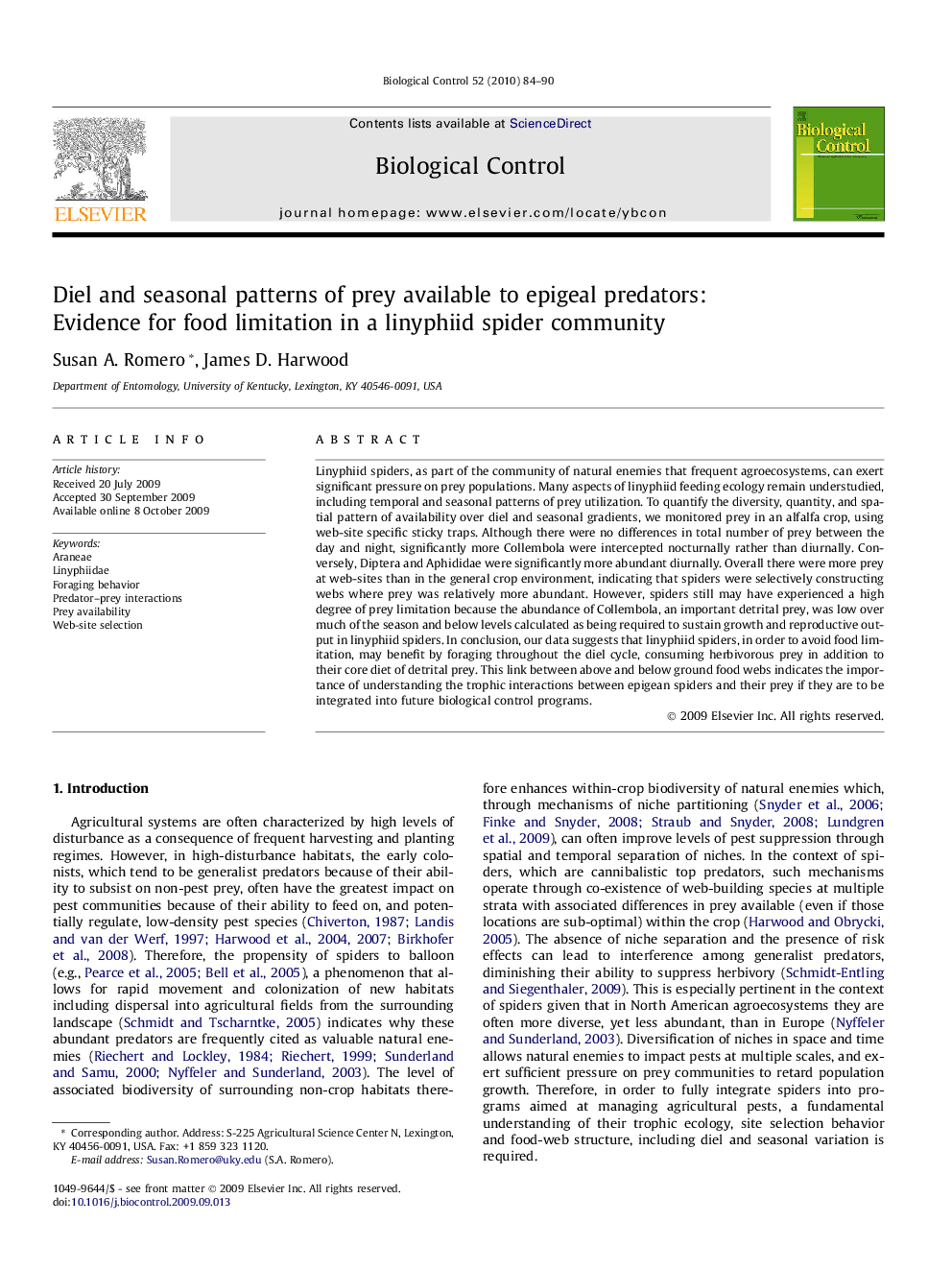| کد مقاله | کد نشریه | سال انتشار | مقاله انگلیسی | نسخه تمام متن |
|---|---|---|---|---|
| 4504628 | 1321102 | 2010 | 7 صفحه PDF | دانلود رایگان |

Linyphiid spiders, as part of the community of natural enemies that frequent agroecosystems, can exert significant pressure on prey populations. Many aspects of linyphiid feeding ecology remain understudied, including temporal and seasonal patterns of prey utilization. To quantify the diversity, quantity, and spatial pattern of availability over diel and seasonal gradients, we monitored prey in an alfalfa crop, using web-site specific sticky traps. Although there were no differences in total number of prey between the day and night, significantly more Collembola were intercepted nocturnally rather than diurnally. Conversely, Diptera and Aphididae were significantly more abundant diurnally. Overall there were more prey at web-sites than in the general crop environment, indicating that spiders were selectively constructing webs where prey was relatively more abundant. However, spiders still may have experienced a high degree of prey limitation because the abundance of Collembola, an important detrital prey, was low over much of the season and below levels calculated as being required to sustain growth and reproductive output in linyphiid spiders. In conclusion, our data suggests that linyphiid spiders, in order to avoid food limitation, may benefit by foraging throughout the diel cycle, consuming herbivorous prey in addition to their core diet of detrital prey. This link between above and below ground food webs indicates the importance of understanding the trophic interactions between epigean spiders and their prey if they are to be integrated into future biological control programs.
Journal: Biological Control - Volume 52, Issue 1, January 2010, Pages 84–90